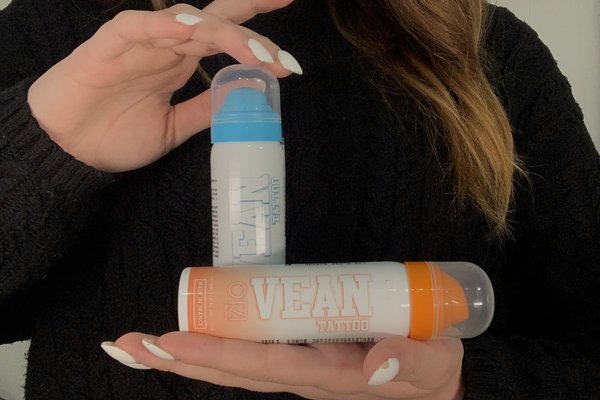Piercing Healing: How to Properly Care for a New Piercing
The idea of wearing a piercing appeals to many.
It's important to understand that this is a collaborative effort between the piercer and you. The healing outcome depends on following the piercer's recommendations. It is crucial to do everything possible to ensure the area heals properly and that no scars remain at the piercing site. After all, a piercing is an open wound that requires appropriate care.

Ears, nose, navel, nipples:
- Spray antibacterial spray Otzi antibacterial saline solution or biotatium hygienic rinsing solution on both sides of the piercing, carefully wipe with a cotton swab, cleaning the piercing and jewelry from dirt, dust, blood, etc. Repeat daily, 3-4 times a day, within two weeks after the procedure
- Spray otzi saline solution or biotatium saline solution on all sides of the puncture and carefully wipe the residue with a cotton swab. Repeat daily, twice a day, within a month after the procedure
- Check out, how screwd the jewelry is. Sometimes the wrap can get loosened, so after sleeping/showering, check them by turning them from right to left (necessarily with clean hands)
- After 2-4 weeks, you have to visit the studio to shorten the size of the earring in order to minimize the risk of injury (nostril and navel are optional)
- The ring can be inserted into the piercing at least 2-2.5 months after the procedure.
- Nipple and navel piercings, after cleaning, must be covered with a clean plaster for two weeks after the procedure, this minimizes the risk of injury.


Tongue, smile, lips:
- Dilute biotatium antibacterial liquid concentrate in a ratio of 1:2. Rinse the puncture site 3-4 times a day for the next two weeks after the procedure. After eating, during the healing period, it is necessary to rinse the oral cavity with water.
- It is necessary to check the tightness of the winding from time to time, sometimes it can get unscrewed, so after sleeping/eating, check them by turning them from right to left (necessarily with clean hands).
- After 2-4 weeks, you need to contact the studio to shorten the size of the earring, in order to minimize the risk of injury(smile is optional)
- Treat the outer surface of the lip in the same way as ear-piercing

After getting a piercing in our studio, you will have titanium jewelry installed, titanium is considered to be the best metal for healing and permanent wearing in any piercings, gold, silver, or medical steel jewelry is recommended to be inserted into the piercing no earlier than six months after the procedure, providing all care recommendations.
We absolutely do not recommend putting costume jewelry in piercings.


How Long It Takes
for a New Piercing to Heal
Depending on the type of piercing, different body areas heal at varying speeds.
This depends on the person's health condition, quality of sleep, stress levels, diet, and proper regular care.
For example, a tongue piercing heals the fastest due to the intense blood flow characteristic of this area. Usually, it takes no more than one to three months. Earlobes typically heal within six weeks, while cartilage piercings or nose piercings can take from six to 12 months, and a belly button up to a year.
It is important to know that a piercing might appear healthy before the healing process is complete. This is because the damaged tissue heals from the outside in. Although it may look healthy, the inner part remains fragile. The key is to be patient and continue caring throughout the entire healing period as instructed by your piercer.








